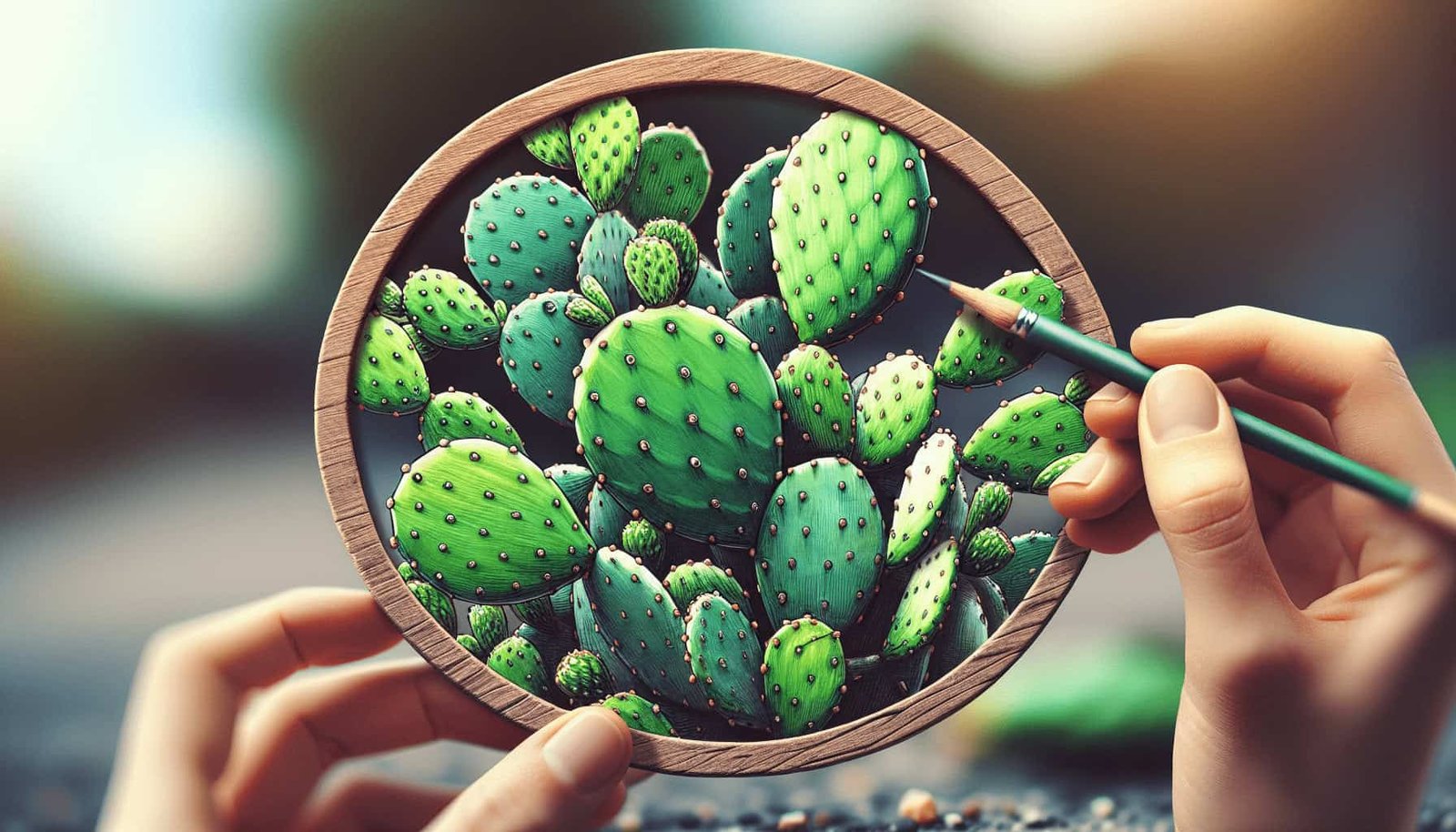Have you ever wondered how to identify and address nutrient deficiencies in nopal? This versatile and drought-resistant plant, commonly known as prickly pear cactus, is cherished not only for its unique appearance but also for its nutritional and medicinal benefits. However, just like any plant, it can suffer from nutrient deficiencies that may impede its growth and productivity.

Understanding the Nutritional Needs of Nopal
Nopal is a resilient plant, but it still requires essential nutrients to thrive optimally. These nutrients include macronutrients (nitrogen, phosphorus, and potassium) and micronutrients (iron, manganese, zinc, copper, molybdenum, boron, and chlorine). A balanced supply of these nutrients ensures that the nopal grows healthily and produces high-quality pads and fruits.
Macronutrients
Macronutrients are required in larger quantities and play significant roles in the growth and development of the plant. Here’s a breakdown of the primary macronutrients:
- Nitrogen (N): Critical for pad and fruit growth. It helps in the synthesis of proteins and chlorophyll.
- Phosphorus (P): Important for root development and energy transfer within the plant.
- Potassium (K): Essential for water regulation, enzyme activation, and overall plant health.
Micronutrients
Micronutrients, although required in smaller amounts, are just as crucial for the plant’s overall health. The following micronutrients are needed for nopal:
- Iron (Fe): Vital for chlorophyll synthesis and photosynthesis.
- Manganese (Mn): Important for enzyme activation and photosynthesis.
- Zinc (Zn): Needed for growth hormone production and enzyme activity.
- Copper (Cu): Plays a role in reproduction and root metabolism.
- Molybdenum (Mo): Essential for nitrogen metabolism.
- Boron (B): Important for cell wall formation and reproductive health.
- Chlorine (Cl): Involved in osmosis and ionic balance.
Identifying Nutrient Deficiencies in Nopal
To address nutrient deficiencies, you must first be able to identify the symptoms accurately. Each nutrient deficiency manifests in specific ways, allowing you to diagnose what your nopal might be lacking.
Nitrogen Deficiency
- Symptoms: Yellowing of older pads, stunted growth, and poor fruiting.
Phosphorus Deficiency
- Symptoms: Dark green or purplish coloration in older pads, slow maturation, and weak root systems.
Potassium Deficiency
- Symptoms: Yellowing and browning at the edges of pads, weak structural integrity, and reduced drought resistance.
Iron Deficiency
- Symptoms: Interveinal chlorosis (yellowing between the veins) in young pads, leading to poor photosynthesis.
Manganese Deficiency
- Symptoms: Interveinal chlorosis in young pads similar to iron deficiency but often coupled with necrotic spots.
Zinc Deficiency
- Symptoms: Reduced pad size, shortened internodes, and chlorosis on young growth.
Copper Deficiency
- Symptoms: Dark green pads that may become twisted, poor root systems, and reduced flowering.
Molybdenum Deficiency
- Symptoms: General yellowing of the plant with symptoms appearing similar to nitrogen deficiency but in younger growth.
Boron Deficiency
- Symptoms: Brittle pads, tip death, and poor flowering.
Chlorine Deficiency
- Symptoms: Wilting, chlorosis, and reduced size of pads.
Addressing Nutrient Deficiencies
Once you’ve identified a deficiency, the next step is to address it effectively. Here are practical steps you can take to ensure your nopal gets back on track to optimal health.
Soil Testing
Before making any amendments, conduct a soil test. This will provide you with precise information about the nutrient profile of your soil, helping you to determine the specific deficiencies and avoid over-fertilization.
Fertilization
You can address nutrient deficiencies using appropriate fertilizers. Here’s a detailed table of common fertilizers and the deficiencies they address:
| Nutrient | Type of Fertilizer | Application Method |
|---|---|---|
| Nitrogen | Ammonium sulfate, urea | Soil application or foliar spray |
| Phosphorus | Superphosphate, bone meal | Soil application |
| Potassium | Potassium sulfate, wood ash | Soil application |
| Iron | Iron chelate | Soil application or foliar spray |
| Manganese | Manganese sulfate | Soil application or foliar spray |
| Zinc | Zinc sulfate | Soil application or foliar spray |
| Copper | Copper sulfate | Soil application or foliar spray |
| Molybdenum | Ammonium molybdate | Soil application |
| Boron | Boric acid, borax | Soil application or foliar spray |
| Chlorine | Potassium chloride | Soil application |
Organic Amendments
If you prefer organic solutions, several organic materials can help improve nutrient availability:
- Compost: Adds general nutrients and improves soil structure.
- Manure: Provides an excellent source of nitrogen and other nutrients.
- Kelp Meal: Rich in potassium and micronutrients.
- Bone Meal: Provides phosphorus.
pH Adjustment
Soil pH can significantly impact the availability of nutrients. Nopal thrives in slightly acidic to neutral pH (6.0-7.0). If the pH is out of this range, consider adjusting it:
- To raise pH: Add lime (calcium carbonate).
- To lower pH: Add sulfur or organic materials like pine needles or peat moss.
Preventing Future Deficiencies
Prevention is better than cure, and there are several practices you can adopt to minimize the risk of nutrient deficiencies in your nopal.
Regular Soil Testing
Conduct soil tests regularly, at least once a year. This will help you keep track of nutrient levels and make adjustments before deficiencies become severe.
Balanced Fertilization
Use a balanced fertilizer that provides essential macronutrients and micronutrients. Avoid excessive application of any single nutrient, as this can lead to imbalances and even toxicity.
Mulching
Mulch around the base of the plant to conserve moisture, regulate temperature, and improve soil structure. Organic mulches will decompose and add nutrients to the soil over time.
Crop Rotation
If you are growing nopal along with other crops, practice crop rotation to prevent the depletion of specific nutrients in the soil.
Integrated Pest Management
Healthy plants are less susceptible to nutrient deficiencies. Implement integrated pest management practices to keep your nopal free from pests and diseases that could weaken its nutrient uptake.

Diagnosing Multiple Deficiencies
Sometimes, you may encounter multiple nutrient deficiencies simultaneously, which can complicate diagnosis and treatment. Use the following tips to differentiate and address multiple deficiencies:
Overlapping Symptoms
Certain deficiencies may present similar symptoms, such as yellowing of pads. In such cases, perform a soil test and consider the history of fertilization and watering practices to narrow down the possibilities.
Sequential Treatment
If you suspect multiple deficiencies, address them in sequence rather than all at once. Start with the most critical nutrient (e.g., nitrogen) and monitor the plant’s response before moving to the next.
Monitor Plant Response
After applying amendments, observe the plant for signs of recovery. New growth should show improvement within a few weeks for most nutrients. If progress is slow or non-existent, reassess the possible deficiencies.
Common Misconceptions and Pitfalls
Addressing nutrient deficiencies is not without its challenges and misunderstandings. Let’s clarify some common misconceptions:
Over-Fertilization
More fertilizer is not always better. Over-fertilization can lead to nutrient imbalances, toxicity, and environmental pollution. Always follow recommended dosages and avoid excessive applications.
Ignoring Soil pH
As mentioned earlier, soil pH affects nutrient availability. Applying fertilizers without considering pH adjustments can be ineffective. Ensure the pH is within the optimal range for nopal before adding nutrients.
Neglecting Organic Matter
Soil organic matter improves nutrient availability, moisture retention, and soil structure. Neglecting to add organic matter can lead to longer-term deficiencies even with regular fertilization.

Conclusion
Identifying and addressing nutrient deficiencies in nopal is a crucial aspect of maintaining this resilient and beneficial plant. By understanding the specific symptoms associated with each nutrient deficiency and implementing effective corrective measures, you can ensure your nopal thrives.
Conduct regular soil tests, use balanced fertilization practices, and consider organic amendments to provide a holistic approach to plant health. With careful observation and timely intervention, your nopal will continue to flourish, providing you with its numerous benefits for years to come.

